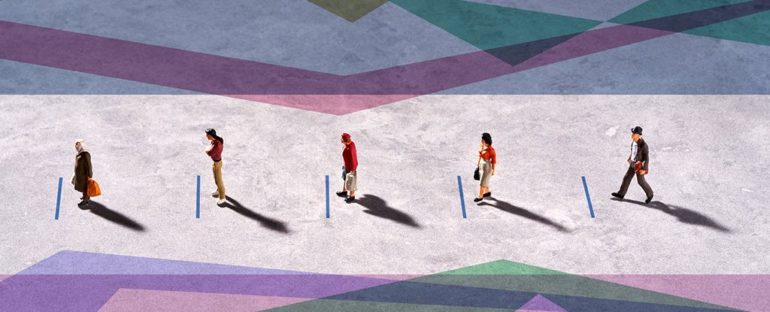With hopes pinned on mass vaccination programs seeing an eventual end to the COVID-19 pandemic, citizens around the world are lining up for a jab.
So far, efforts to curb the outbreak by spreading immunity this way seem to be working – but according to new research, right now might also be the worst time to let down our guard.
A team of scientists led by researchers from the Institute of Science and Technology Austria calculated the risk of a vaccine-resistant strain emerging under different scenarios according to a modified model of SARS-CoV-2 transmission.
Central to each scenario was the rate of vaccine uptake within a population of 10 million over three years, and the extent to which non-pharmaceutical interventions such as mask wearing and social distancing make a difference.
Unsurprisingly, a rapid roll-out where everybody receives their full quota of approved immunizations in the shortest time would leave the deadly coronavirus few opportunities to randomly develop antibody-resistant genes.
At the other end, having a mutating virus spread unfettered through a susceptible population gives the pathogen plenty of chances to roll the dice on fancy new talents that may help it jump between more hosts with greater efficiency.
We might imagine that the most perfidious kind of pathogen – one that would innovate to avoid our immune system in ever more insidious ways – would arise in a population where nobody is vaccinated.
“By contrast, a counterintuitive result of our analysis is that the highest risk of resistant strain establishment occurs when a large fraction of the population has already been vaccinated but the transmission is not controlled,” the researchers conclude.
More specifically, in situations where an emergent strain is permitted to spread, its emergence occurs when around 60 percent of those model 10 million citizens have been fully immunized.
Having nearly two-thirds of a population with their full quota of vaccinations might seem like a good time to throw off the mask and hug loved ones in celebration of newfound freedom. Unfortunately, based on predictions under this model, there couldn’t be a worse time to relax.
“One simple specific recommendation is to keep transmission low even when a large fraction of the population has been vaccinated by implementing acute non-pharmaceutical interventions (i.e. strict adherence to social distancing) for a reasonable period of time, to allow emergent lineages of resistant strains to go extinct,” the researchers advise.
Every time a virus particle replicates itself, there’s a chance its library of genes will tumble into a new configuration. Any one of those configurations could potentially outwit an immune system that’s already received a vaccine, leaving us all unprotected once more.
We don’t have to make this lottery win an easy one. Throwing as many obstacles as possible at the virus ensures it needs to chance upon every clever trick in the book before it gets to claim the big prize.
The goal of herd immunity is a shifting one, reliant on more factors than simply how many people have enough antibodies to ward off a significant infection.
Of course, vaccines play a central role in us all returning to a more intimate, less confined life. Hitting high numbers of immunized bodies as quickly as possible is vital. But the strategy isn’t one where we can take our foot off the accelerator as we approach the finish line.
If anything, now is the time to double down, lest the hardships we’ve endured become sacrifices made in vain.
This research was published in Nature.



